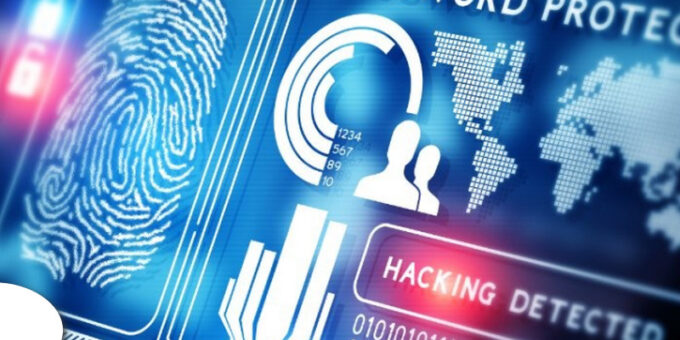
1. Use Strong, Unique Passwords
Weak passwords are a hacker’s favorite target. Ensure every password is strong, complex, and unique for each account. Avoid using simple combinations like “123456” or “password.” Instead, opt for a mix of letters, numbers, and special characters. If remembering multiple passwords feels overwhelming, consider a password manager. These tools can securely store and generate complex passwords for all your accounts.
2. Enable Two-Factor Authentication (2FA)
Two-factor authentication adds an extra layer of security. Even if hackers steal your password, they still can’t access your account without the second factor. Many services, like Google and Facebook, offer 2FA. Typically, it involves receiving a one-time code via text or an authentication app. This extra step may seem inconvenient, but it can prevent unauthorized access.
3. Regularly Update Software and Devices
Cybercriminals often exploit outdated software. Keeping your devices updated helps patch vulnerabilities. Most updates include security improvements that protect against the latest threats. Enable automatic updates when possible. This ensures you’re always protected, even if you forget to check for updates.
4. Be Wary of Phishing Scams
Phishing scams trick people into sharing sensitive information. These scams usually come through emails or messages posing as legitimate companies. Always double-check the sender’s email address before clicking any links. If something feels suspicious, it’s better to err on the side of caution. Phishing attacks can lead to identity theft, so staying alert is crucial.
5. Backup Your Data Regularly
Data loss can happen due to cyberattacks, hardware failure, or accidental deletion. Regular backups can save the day. Use both cloud-based and physical storage options for backups. This way, if one fails, you still have access to your important files. Also, encrypt your backups to ensure they’re secure from unauthorized access.
6. Avoid Public Wi-Fi for Sensitive Activities
Public Wi-Fi networks are often unsecured, making them a hacker’s playground. Avoid accessing sensitive information, like banking apps, over public Wi-Fi. If you must use it, consider using a virtual private network (VPN) for added security. A VPN encrypts your data, making it much harder for cybercriminals to intercept.
7. Install and Maintain Antivirus Software
Antivirus software can detect and block potential threats. Make sure you install reputable software and keep it updated. Antivirus programs can defend against malware, viruses, and other malicious attacks. Even with safe browsing habits, having an extra layer of defense is always a smart move.
8. Implement a Firewall
A firewall acts as a barrier between your device and potential threats. It monitors incoming and outgoing traffic, filtering out malicious activity. Ensure your firewall is always active, whether you’re using a personal computer or a business network. It’s one of the simplest yet most effective ways to secure your data.
9. Be Careful with Social Media Sharing
Oversharing personal information on social media can lead to security risks. Hackers often gather details like birthdates, locations, and personal preferences from public profiles. This information can help them bypass security questions or craft phishing attacks. Review your privacy settings regularly and limit the amount of personal information shared.
10. Educate Yourself and Your Team
Cybersecurity isn’t just an IT issue. Everyone needs to be informed about potential risks. Regular training sessions can help your team recognize threats like phishing scams or suspicious downloads. The more knowledgeable everyone is, the better protected your organization will be.
11. Encrypt Your Data
Encryption converts your data into a code, making it unreadable to unauthorized users. Even if hackers access your data, they won’t be able to use it without the decryption key. Many services offer built-in encryption, so always check your device settings. For sensitive communications, consider using encrypted messaging apps like Signal.
12. Limit Access to Sensitive Information
Not everyone in your organization needs access to every file. Limit access based on roles and responsibilities. By implementing this practice, you reduce the risk of internal threats. If an employee’s account is compromised, the damage will be minimized because they don’t have access to everything.
13. Monitor for Unusual Activity
Regularly monitoring your accounts and systems can help catch suspicious activity early. Check for unfamiliar logins, strange emails, or unusual file changes. Set up alerts for any unauthorized access attempts. The faster you catch a breach, the less damage it can cause.
14. Use Secure Connections (HTTPS)
Whenever possible, ensure the websites you visit use HTTPS. This protocol encrypts the data exchanged between your browser and the website. It helps prevent man-in-the-middle attacks, where hackers try to intercept your information. Most modern browsers will display a padlock icon next to the URL, indicating the site is secure.
15. Review Privacy Settings on All Devices
Our devices collect more data than we often realize. Review your privacy settings across your smartphone, tablet, and computer regularly. Disable unnecessary data sharing, like location tracking or camera access for certain apps. Always be aware of what data is being collected and who has access to it.
16. Secure Your Home Network
Home networks can be an easy target if not properly secured. Change the default password on your router, and use WPA3 encryption for your Wi-Fi. Keep an eye on which devices are connected to your network, and disable any that seem unfamiliar. Also, consider creating a separate network for guests to limit their access to your primary one.
17. Prepare a Response Plan for Cyber Incidents
Even with the best practices in place, breaches can still occur. Having a plan in place will help minimize damage. Ensure that everyone knows the steps to take if a breach happens. A well-prepared response plan can reduce downtime and data loss during a cyberattack.
Conclusion
As cyber threats continue to evolve in 2024, protecting your data is more critical than ever. Following these cybersecurity practices can help safeguard your personal and professional information. Always stay proactive, educate yourself, and make security a top priority.